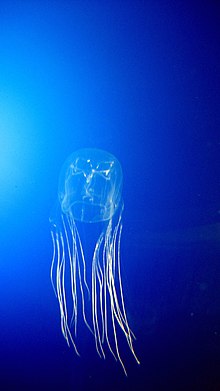The tentacles and body of the jellyfish are covered with barbed wire sacs. These silk sacs can quickly sting, capture or conquer prey (including humans!) within a few milliseconds. Some jellyfish are non-toxic.
learn
Jellyfish are invertebrates, a member of the phylum Cnidaria, which includes jellyfish, sea anemones, corals and polyps. There are more than two hundred species of jellyfish in the oceans of the world. They are distributed in waters all over the world, whether it is tropical waters, temperate waters, shallow waters, oceans about 100 meters deep, or even freshwater areas. Of the shadow. Jellyfish existed as early as 650 million years ago, and they appeared even before dinosaurs. The shape and size of jellyfish are different, and the tentacles of the largest jellyfish can extend about ten meters. In terms of classification, some belong to the class of Hydra, and some belong to the class of Jellyfish. In their life history, almost all species have two types, namely the hydroid type and the jellyfish type, and there are two types between the generations of sexual reproduction and asexual reproduction. The phenomenon of sexual intercourse, and the jellyfish we often see are sexual jellyfish.
Classification
Mitral jellyfish
The mitral jellyfish, also known as the Portuguese battleship, is a pipe jellyfish. Although the mitral jellyfish resembles a jellyfish, it is actually a community of hydrops and jellyfish. The tentacles of the mitral jellyfish are an average of 10 meters long and have toxin-filled stinging cells on their whiskers. It can cause severe pain to humans and leave a red flag. The sting can also cause allergic reactions and a series of effects, such as fever, shock, and interference with heart and lung functions. In severe cases, it can be fatal. But fatal examples are relatively rare.
.jpg/220px-Portuguese_Man-O-War_(Physalia_physalis).jpg)
Australian box jellyfish
The Australian box jellyfish, also known as the sea wasp, is a jellyfish that lives in Australia and northern New Guinea, the Philippines, and Vietnam. Its tentacles can be up to 3 meters long and are covered with toxin-filled stinging cells. It can cause severe pain to humans and leave a red flag, and the neurotoxin in the stinging cell can cause death in a few minutes. After being stung by the box jellyfish, immediately wash the wound with vinegar, because the acetic acid in the vinegar can kill the tentacles of the box jellyfish.

